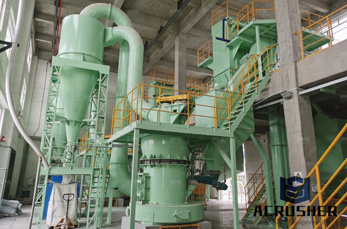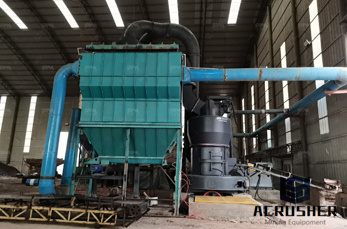 WhatsApp)
WhatsApp)
motors These are known as mill stands The layout of a rolling mill varies from a simple single stand mill to several stands positioned either side by side or in a line A mechanism commonly called a roller table directs the work piece to the rolls and another roller table for handling the pieces emerging out of the roll

1 MODELING THE SPECIFIC GRINDING ENERGY AND BALLMILL SCALEUP K G Tsakalakis GA Stamboltzis NTUA AthensGreece Email kostsakg Presented at the conference IFAC 2004 held in September 2004 NancyFrance

Rod mills oper ate typically at 3 c between 064 and 075 with larger diameter mills running at the lower end and smaller mills at the upper end Typical rod loads are 35 to 45 of mill volume and rod bulk densities range from about 5400 kgm3 to 6400 kgm3 Rowlands CA and Kjos DM

Rod Mills The Steel Head Rod Mill sometimes call a bar mill gives the ore dressing engineer a very wide choice in grinding design He can easily secure a standard Steel Head Rod Mill suited to his particular problem The successful operation of any grinding unit is largely dependent on the method of removing the ground pulp

The rods grind the ore by tumbling within the the mill similar to the grinding balls in a ball mill To prevent the conditions leading to rod charge tangling the length to diameter ratio is maintained at 14 to 16 Rod mills accept feed up to about 50 mm 2 in and produce a product in the size range of 3000 to 270 mm –4 to –35 mesh

Generally rod mills are used for Coarse grinding from nominal in feed to a nominal 10 mesh product Preparing ball mill feed for two or more stages of grinding Producing a material with a minimum of fines and a minimum of tramp oversize material

Calculate Ball Mill Grinding Capacity As defined this value should never exceed 100 but in some cases – particularly in Grate Discharge Mills – it could be lower than 100 Note that this interstitial slurry does not include the overfilling slurry derived from the difference between the Charge and Ball Mill Filling

The lengths of the rods are about 100–150mm shorter than the inside mill length Data from Rowland indicate that the lengthtodiameter ratio of mills ranges from 12 to 23 The largest length mill is around 7m The ratio of the length of rod to mill diameter should

Rod mills normally carry 35 to 65 rod charge by volume The limits on charge level are 1 keeping the feed end trunnion open so that feed will get into the mill and 2 keeping the rod charge low so rods will not work their way into discharge openings where they can cause rod tangling

How to Size a Ball Mill Design Calculator Formula D Represents the socalled Dynamic Angle of Repose or Lift Angle adopted during steady operation by the top surface of the mill charge "the kidney" with respect to the horizontal A reasonable default value for this angle is 32° but may be easily "tuned" to specific applications against any available actual power data

Ball mill sizing Calculator for ball mills in a single stage circuit Rod ball mill sizing Calculator for rod mills as first stage of the circuit and ball mills as second stage of the circuit

DESIGN AND FABRICATION OF MINI BALL MILL METHODOLOGY The speed of the rotation will be control by the regulator and the jar will keep rotating until the material inside become a very fine powder To ensure the stability of the mini ball mill a ball mill base is design and fabricate to withstand the weight of the rotating jar motor and gears

rod mill design calculation critical speed Ball Mill Critical Speed Mineral Processing Metallurgy A Ball Mill Critical Speed actually ball rod AG or SAG is the speed at which the centrifugal forces equal gravitational forces at the mill shells inside surface and no balls will fall from its position onto the shell

mill lining systems are custom designed using proprietary engineered rubber and metal compound materials Overview Our elastomer laboratory experts are continually developing new compounds for improved mill liner performance and wear life

based on the calculation of the overall potential and kinetic energy of the ball charge during its motion inside the rotating mill The concluding section of the article offers empirical formulas to calculate idling and aggregate capacity of the mill main drive Key word semiautogenous milling modeling strength pro

For secondary milling duties a ball mill work index determination will suffice The minimum sample requirement for the rod and ball index tests is 25 kg of either –127 mm 12" crushed rock or split NQ 50mm dia drillcore For the ball mill work index test alone only 10 kg of material is required

Mar 14 2007· RE Manual design of SAGballrod mill foundations youngstructural Structural 7 Mar 07 1827 I have a bit of a long answer here so Ill give you a synopsis I dont think an design can be produced manually and I think a preliminary design could

47th ©Annual Canadian Mineral Processors Operators Conference Ottawa Ontario January 2022 2015 INTRODUCTION Conventional low throughput grinding options consisting of multistage crushing followed by rod and ball mills have almost become obsolete in

KWr kilowatts per short ton of rods D mill diameter indise liners in feet Vp fraction of mill volume rod load ground out mill Cs fraction of critical speed The power draw of the mill is then obtained by multiplying KWr by the tons of rods in the mill which yields

Jun 19 2017· Wire rod mills produces steel wire rods of diameters 5 mm to 125 mm in coil form with the weight of the coil upto 25 tons The qualities of steels being rolled in these mills can range from low carbon mild steel medium carbon high carbon and micro and low alloyed steels

The basic parameters used in ball mill design power calculations rod mill or any tumbling mill sizing are material to be ground characteristics Bond Work Index bulk density specific density desired mill tonnage capacity DTPH operating solids or pulp density feed size as F80 and maximum ''chunk size'' product size as P80 and maximum and

If the rod mill fi nes are taken into account the rod mill product can be theoretically corrected to show a P80 of 1700 μm the plotted 80 per cent passing size divided by 17
 WhatsApp)
WhatsApp)